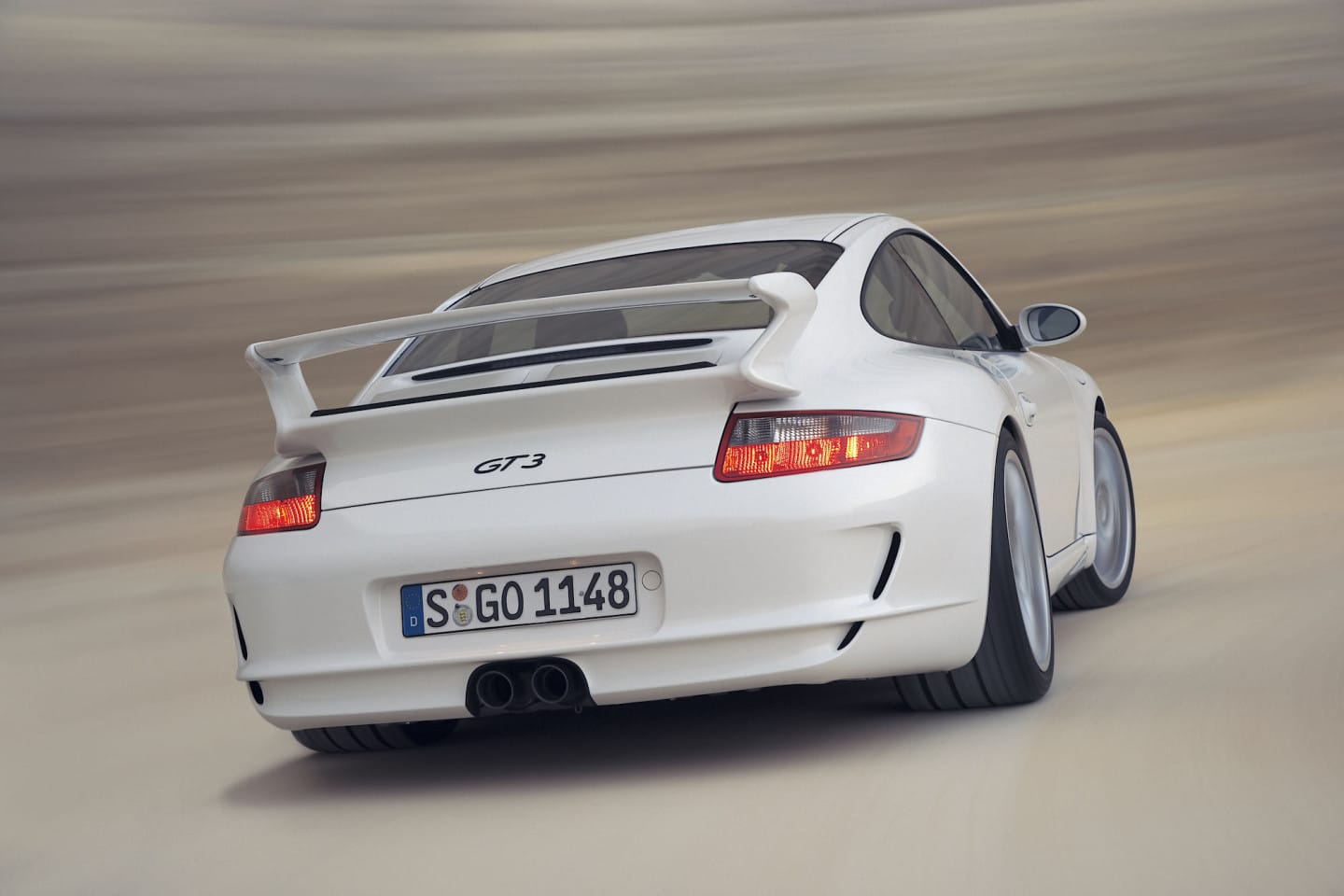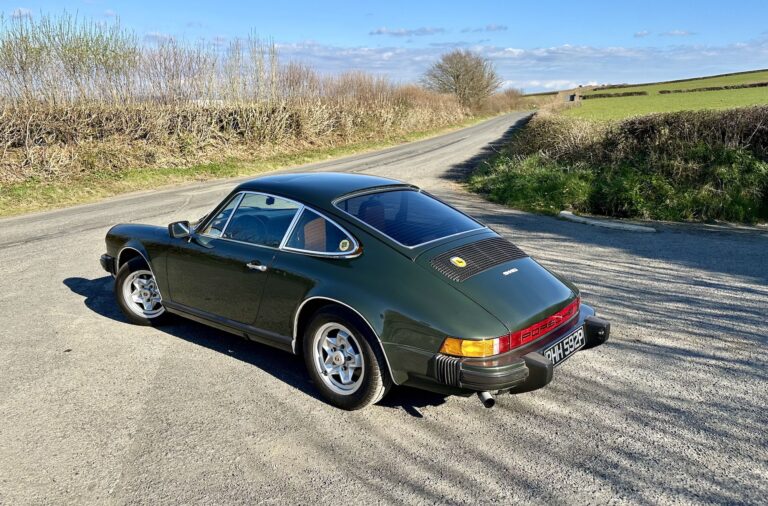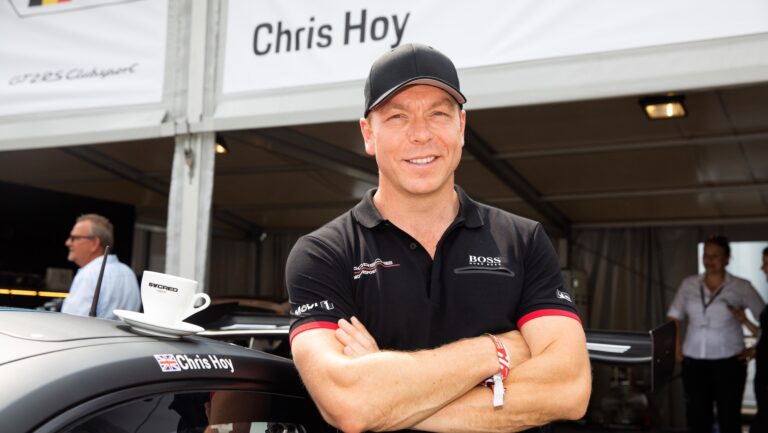 By Tim Pitt
12 months ago
By Tim Pitt
12 months ago
Porsche 997.1 GT3 buyer’s guide
Our need-to-know guide to the Porsche 997.1 GT3, with technical advice and buying tips from RPM Technik and Lakeside Classics
Why should you buy one?
One of the most exciting 911s to drive and a stone-cold modern classic, the Porsche 997.1 GT3 excels on both the road and racetrack. Plus, we think its stock will rise in years to come.
Porsche 997.1 GT3: the key facts
The most rarefied derivatives of the 997 GT3, such as the 3.8 RS and 4.0 RS, tend to steal the limelight, but make no mistake: even a ‘standard’ Gen1 GT3 is sensational to drive. Launched in 2006, it finished second in EVO magazine’s subsequent Car of the Year shootout, just pipped by the Ferrari 599 GTB.
This was the first GT3 developed from scratch by Andreas Preuninger. His team at Weissach refined the template established by the 996, with a raised rev limit for more power and adaptive PASM suspension for sharper handling. The Turbo might have been faster, the GT2 arguably more exciting, but the GT3 – naturally aspirated and only available with a manual gearbox – was the purist’s choice. It remains so today.
Unless you find one in Speed Yellow or Guards Red, a 997.1 GT3 flies relatively under the radar. It borrows the narrow body of a 997 Carrera, with a bi-plane rear wing that incorporates an adjustable Gurney flap. Like the 996 GT3 RS, a vent at the leading edge of the aluminium bonnet aids cooling to the front radiators, and expels air to boost downforce at speed. Wheels are spidery 19-inch alloys with five studs, rather than the centre-lock fixings of the 997.2 GT3.
The GT3 uses a derivative of the legendary, dry-sumped ‘Mezger’ flat-six, which had powered Porsche to victory at Le Mans in 1998. Here, it displaces 3.6 litres and develops 415hp at 7,600rpm. And the fun doesn’t stop until a searing 8,400rpm. With a kerb weight of 1,395kg (identical to a 997.1 Carrera), the GT3 can blitz to 62mph in 4.3 seconds and nudge 192mph on the autobahn. It’s also around 10 seconds faster around a lap of the Nordschleife than the 996.2 GT3 it replaced.
As you’d expect, a 997.1 GT3 RS can go quicker still, but the difference between regular and Rennsport versions is less pronounced here than in subsequent 911s. Indeed, the RS has an identical 415hp output and is only 20kg lighter, while stiffer suspension, a shorter final drive and less sound deadening make it quite compromised for road use. The two cars are different, but neither one is necessarily better.
The 997.1 GT3 was on sale for less than two years, during which time just 2,378 examples were produced. Back in 2006, Porsche charged £80,660 before options, and you can expect to pay around the same amount today – with the very best cars stretching towards six figures. Look after a GT3, though, and it should look after you.
Categories
How does the Porsche 997.1 GT3 drive?
‘Analogue’ is an overused word in the motoring journalist’s lexicon, but it absolutely applies here. With weighty controls that require deliberate inputs, the 997.1 GT3 rewards commitment and demands a healthy level of respect. Nonetheless, delicate feedback and brilliant balance also mean this isn’t an intimidating 911 to drive. It feels alert, alive and, well… analogue.
Reporting on that Car of the Year group test in 2006, EVO said: ‘The engine is just awesome. At first it doesn’t seem to have enormous punch from tickover, but then it just seems to keep pulling and pulling and revving and revving until it feels absurd that you haven’t had to change up. To that extent it really feels like a proper race engine, and hard-edged unlike any lesser 911 flat-six. It sounds like it has just taken a wrong turn at the end of the Mulsanne’.
CAR magazine was equally effusive at the time, saying: ‘Compared to the last GT3, and more so the original which came before it, the new car is much less of a handful and ultimately much quicker point-to-point. Compared with the Turbo, the GT3 is more involving, more characterful. Basically, more fun.’
Writing for Total 911 magazine in 2019, Ben Barry rated the 997.1 above its 996.2 predecessor. He said: ‘From the intensity of the noise to the heady, almost overwhelming rush past 7,000rpm, all of it just wraps you up in the experience and demands every last bit of your concentration’.
Greig Daly, sales and marketing director at RPM Technik, has driven many examples of the 997.1 GT3 over the years. “They feel tough and built to last,” he explains. “The car has a raw feel, but there’s more duality than a 996 GT3 – along with more space inside. I’m 6ft 2in and I fit in them more comfortably.”
Henry Thomas, director at Porsche specialist Lakeside Classics, is also a fan. “A Gen1 997 GT3 is a bit of a workout, but so engaging to drive,” he says. “They’re fantastic cars – and fantastic value for money in today’s market, too.”
Lastly, on those occasions when you’re not chasing lap times or haring along a Welsh B-road, the 997.1 GT3 won’t try your patience or frazzle your nerves. Air conditioning and an audio system came as standard, leather and Alcantara trim add some luxury, and the optional PCM with satnav helps with day-to-day driving. With no rear seats, the GT3 is remarkably roomy for a sports car, too – particularly if you choose a Comfort-spec car without a roll cage.
Porsche 997.1 GT3: evolution of tech
After the critical acclaim heaped on the 996.2 GT3, Andreas Preninger wisely opted for careful evolution rather than radical reinvention. The 997.1 was better in almost every area: faster, more comfortable, safer and better equipped, yet it achieved all this without diluting the GT3 experience.
The 3.6-litre engine changed little from its 996 specification. However, the addition of new cylinder heads, VarioCam technology on both inlet camshafts and an updated Bosch Motronic ECU make for better tractability at low revs and more top-end power. The latter peaks at 415hp (up from 381hp in the 996.2 GT3), with an extra 20Nm of torque totalling 405Nm at 5,500rpm. The frenetic 8,400rpm redline is also 200rpm higher than before.
Thankfully the GT3’s chassis is a perfect partner for its exuberant engine. The car sits around 30mm lower than a 997 Carrera (“Watch that front splitter on speed humps,” cautions Henry), with rose-jointed suspension that allows adjustments to the ride height, camber and toe angles. If you enjoy track days, there’s plenty of scope for fine-tuning your perfect setup.
Porsche Active Suspension Management (PASM) was also standard for the first time on a GT3, electronically adjusting the individual dampers to keep the car poised and stable. A button on the dashboard offers a choice of Normal or stiffer Sport modes.
Reining in all that performance is the job of 350mm discs with six-piston calipers at the front and four-pot items at the rear. A Porsche Ceramic Composite Brake (PCCB) setup was an expensive option, featuring 380mm discs that weighed half as much as the steel items. Spot these cars by their distinctive yellow callipers.
The 997.1 GT3 also gained traction control (although it was less vigilant in Sport mode, and could be switched off entirely), with drive going to the rear-wheels via a cable-operated manual gearbox that had shorter ratios, plus a mechanical limited-slip differential. Nearly two decades later, this blend of technology with mechanical tactility seems even more appealing for those on the hunt for a fun and engaging Porsche.
What to look for when buying a Porsche 997.1 GT3
The good news is there’s always plenty of 997.1 GT3s for sale on the Marketplace. Both our experts, Greig Daly of RPM Technik and Henry Thomas of Lakeside Classics, agree on the most important piece of advice: buy the very best car you can, rather than trying to save money upfront. A tired GT3 won’t drive properly and it could prove much costlier in the long-run.
The good news is there’s always plenty of 997.1 GT3s for sale on the Marketplace. Both our experts, Greig Daly of RPM Technik and Henry Thomas of Lakeside Classics, agree on the most important piece of advice: buy the very best car you can, rather than trying to save money upfront. A tired GT3 won’t drive properly and it could prove much costlier in the long-run.
Furthermore, don’t consider a car without a meticulous maintenance record, then get it professionally inspected before you part with any cash. A Porsche specialist can interrogate the ECU to reveal if the mileage displayed tallies with the operating hours – and how many times the engine has been over-revved. The latter is graded into six bands, with the most extreme suggesting careless former owners or regular track use. That said, Henry says a ‘tracked’ GT3 isn’t necessarily one to avoid – “these cars are built to handle it,” – if the service history is up to scratch.
Greig says the ‘Mezger’ engine and manual transmission are “incredibly tough”, while the GT3’s relatively modest torque means clutches and flywheels tend to last well. “Worn plates in the limited-slip differential are a more common problem.”
Inspect the car’s exterior carefully for signs of crash damage, including mismatched paint and inconsistent panel gaps. Stone chips are quite common on the front bumper and rear wheelarches. Henry recommends using an electronic paint gauge to check the depth of finish on each body panel.
When you go for a test-drive, listen for creaks or knocks from the suspension. “We see leaking PASM dampers, along with worn rear top mounts and lower arm bushes,” reveals Greig. “None of these is hugely expensive, but if they all need doing the cost can ratchet up. Some GT3s have been fitted with aftermarket suspension, such as the KW coilover kit. This does a perfectly good job, but it obviously detracts from the value if you’re looking at a low-mileage and otherwise original car.”
Other things to focus on during your test-drive include the clutch (it should feel heavy, but not excessively so), gearshift action, air conditioning and all the electronic switchgear. Many cars have since been fitted with a PCCM Plus head unit, which offers Apple CarPlay and Android Auto smartphone connectivity in an OEM-look package. It isn’t cheap, at around £1,500, but is well worth the upgrade.
Porsche 997.1 GT3: the options worth having
Don’t get too waylaid by options when searching for a 997.1 GT3. Given the limited number of cars available, and the high cost of recommissioning one, condition and service history trump everything else. Still, the following are worth looking out for…
Clubsport spec
Track-focused, with bucket seats, a rear roll cage and a fire extinguisher. Typically worth £3,000-£5,000 more, says Greig Daly of RPM Technik.
PCCB brakes
A divisive one. The carbon-ceramic discs weigh less and offer ultimate stopping power, but they are fiendishly expensive to replace. Some owners swap them for aftermarket steel items from the likes of AP Racing or Alcon.
Extended leather
Not in the spirit of the GT3, perhaps, but the extended leather package adds a touch of class to a fairly basic cabin.
PCM media system
Rather dated now, the Porsche Communications Management upgrade added a high-res colour screen and satellite navigation.
Bright colours or black
Many 997.1 GT3s are white, silver or grey, so bright colours really stand out. Henry Thomas of Lakeside Classics says black cars are very popular, too.
Sport Chrono Plus
Useful if you plan to take your GT3 on track days, this includes the usual dash-top stopwatch, plus lap timing and data storage capability.
Porsche 997.1 GT3: technical spec
Years produced: 2006-2007
Cars made: 2,378
Engine: Flat-six, 3,600cc, naturally aspirated
Power: 415hp @ 7,600rpm
Torque: 405Nm @ 5,500rpm
Compression ratio: 12.0:1
Transmission: 6-speed manual
Suspension
Front: MacPherson struts, coil springs, anti-roll bar
Rear: Multi-link, coil springs, anti-roll bar
Wheels and tyres
Front: 8.5×19-inch; 235/35/ZR19
Rear: 12×19-inch; 305/30/ZR19
Length: 4,445mm
Width: 1,808mm
Weight: 1,395kg
0-62mph: 4.3 sec
Top speed: 192mph
Find your dream Porsche on the 9WERKS Marketplace, with all stock prepared by quality specialists and backed by comprehensive warranties
























